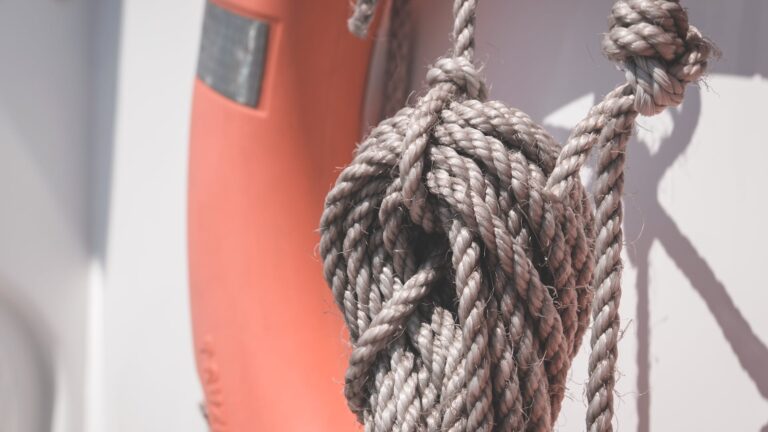What Map Do Sailors Use?
Sailors have relied on nautical charts for centuries to navigate their way around the world’s oceans and waters, and in today’s age of advanced technology, these maps remain just as important as ever for sailors who need to know what lies ahead on their journey.
In this article, we will discuss what nautical charts are and why they are used by sailors, the different types of nautical charts available, how to read them, their advantages, disadvantages and tips for safely using them when sailing.
History Of Nautical Charts
Naval cartography has been around since ancient times when sailors would draw crude maps on paper or parchment to help them remember where they had sailed or plan out their next journey.
Over the centuries these maps became more detailed as new surveys were conducted, with advances in technology allowing more accurate measurements of the sea floor and coastline to be taken.
The first official hydrographic survey was conducted by the Royal Navy in 1795 and since then these surveys have become increasingly precise with modern technology such as GPS, sonar and satellite imagery being used to create highly detailed nautical charts today.
Types Of Nautical Charts
Nautical charts come in several different types depending on their purpose and the area they cover. The most common type is the chart which covers an entire ocean or sea region, such as the Mediterranean Sea or Atlantic Ocean chart, which gives an overview of all the major features in that particular body of water including ports, coastal features such as islands or reefs and navigational hazards such as rocks or shoals that can pose a danger to ships passing through the area.
Other types include harbour approach maps which show detailed information about a particular port or harbour entrance, coastal maps which cover smaller areas along the coast, inland waterway maps which cover rivers, lakes and canals, bathymetric maps which show depths below sea level, and satellite maps which show aerial images of an area taken from space.
Components Of A Nautical Chart
A nautical chart contains several components that provide information about the area covered by it such as symbols indicating ports or other navigational aids, colors which represent different depths below sea level, scales giving distances between points, lines showing magnetic variation, latitude and longitude coordinates, notes on tidal ranges, warnings about hazards such as shoals or rocks, and information about regulations governing vessels in certain areas such as speed limits or restricted zones for commercial vessels only etc..
All this information combined provides sailors with an invaluable tool for navigating safely through unfamiliar waters without running aground or getting lost at sea!
Reading A Nautical Chart: Symbols, Colors And Scales
To accurately read a nautical chart you must first familiarize yourself with its symbols, colors and scales so you can interpret what each feature represents correctly before setting sail! Symbols are used to denote points of interest such as ports or lighthouses while colors represent different depths below sea level with lighter shades indicating shallower waters while darker ones indicate deeper depths (soundings).
Scales provide distances between two points on the map so you can accurately measure how far away something is from your current position if needed.
Advantages Of Using A Nautical Chart
Using a nautical chart has many advantages over relying solely on electronic navigational systems when sailing at sea due to its greater accuracy compared to GPS alone (which is subject to signal disruption from time-to-time).
It also provides much more detailed information than just latitude & longitude coordinates allowing you to plan routes more effectively while taking into account tidal changes that may affect your journey time plus any hazards that may be present near your route (such as rocks etc.) – all this makes for safer navigation overall!
Disadvantages Of Using A Nautical Chart
While using a nautical chart has many advantages there are some disadvantages too – mainly related to its accuracy & reliability due to outdated data from hydrographic surveys (which can take years before they become available) plus weather conditions changing over time making certain areas more hazardous than what was shown on the map originally – all this means it’s important to always double-check your route before setting sail!
How To Obtain A Natical Chart
You can obtain an official natical chart from several sources including your local marina store (if they stock them), online retailers selling printed copies plus various electronic formats that can be downloaded onto electronic devices like tablets or smartphones – just make sure you get one specific for your intended area/route so it contains all relevant details plus updated data where possible!
How To Update Your Natical Chart
To ensure your natical chart is always up-to-date it’s important you regularly check for updates either online (if you purchased an electronic version) or at your local marina store if you bought one there – most retailers will have updated versions available each month so make sure you check before setting sail!
You should also check notices from any relevant authorities regarding changes in regulations governing vessels in certain areas along your route – these can change suddenly without warning so it pays off being informed beforehand!
Safety Tips For Using A Natical Chart When Sailing
When using a natical chart when sailing there are several safety tips you should follow at all times: always double-check your intended route against any updated versions available either online or at your local marina store before setting sail, look out for any warnings indicating hazards near your route that may have changed since the last time you checked, pay attention to any notices from relevant authorities regarding regulations governing vessels in certain areas along your route that may have changed recently, make sure everyone aboard is aware of these changes too so they don’t accidentally put themselves in any danger due to lack of knowledge!
Conclusion: Why It’s Important To Use Natical Charts As A Sailor
Using a natical chart is essential when sailing due its accuracy compared with other navigational methods plus its ability provide detailed information about ports/harbours/lighthouses plus hazards that lie ahead along your route – all this makes it invaluable tool for staying safe at sea while still enjoying all that sailing offers! So make sure you familiarize yourself with how they work before setting sail – it could save lives!







